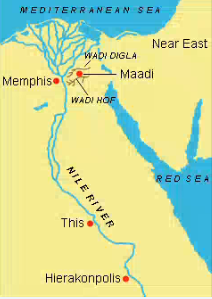题目解析:
【题目翻译】从第1段可以推断,埃及统一的一个结果是
A:降低老权力中心的战略重要性
B:最近联合的埃及经济自给自足的机会
C:上埃及和下埃及的统治者之间的政治紧张局势加剧
D:减少埃及对尼罗河贸易和通讯的依赖
【判定题型】:根据题干中出现的关键词“imply”/“infer”/“suggest”等其他表示推断的词,判定本题为推理题。
【关键词定位】:根据关键词“xx”,定位到 Passage 1 第4句,原句为“The older predynastic (pre-3100 B.C.) centers of power, This and Hierakonpolis, were too remote from the vast expanse of the delta, which had been incorporated into the unified state”。
【逻辑分析】题目问埃及统一的一个结果是什么。根据第一段最后2句话,我们可以得知,“This”和“Hierakonpolis”是埃及的旧都,但是因为距离尼罗河三角洲太遥远了,所以无法为早期埃及王朝的统治者们提供政治统治的必要条件,因而地理位置更优越的孟斐斯所取代。
【选项分析】
A 选项:旧都战略重要性的降低,是正确答案。
B 选项:近代统一后的埃及有了实现经济自给自足的机会。错误,因为第一段根本没有提及与经济有关的任何内容,故 B 选项直接排除。
C 选项:上埃及和下埃及统治者之间的关系变得紧张。错误,第一段中只有这句话提到了上埃及和下埃及“First, and most obvious, the apex of the Nile River delta ……standing between the united lands of Upper and Lower Egypt and offering ready access to both parts of the country.”但是这句话是在描述孟斐斯优越的地理位置,与政治关系紧张没有任何联系。所以 C 选项文中未提及,排除。
D 选项:埃及通过尼罗河进行贸易和通讯的依赖性降低。错误,因为第一段中还没有提到埃及依靠尼罗河进行贸易和通讯,而依赖性降低更是无从谈起。故 D 选项在第一段未提及,排除。


